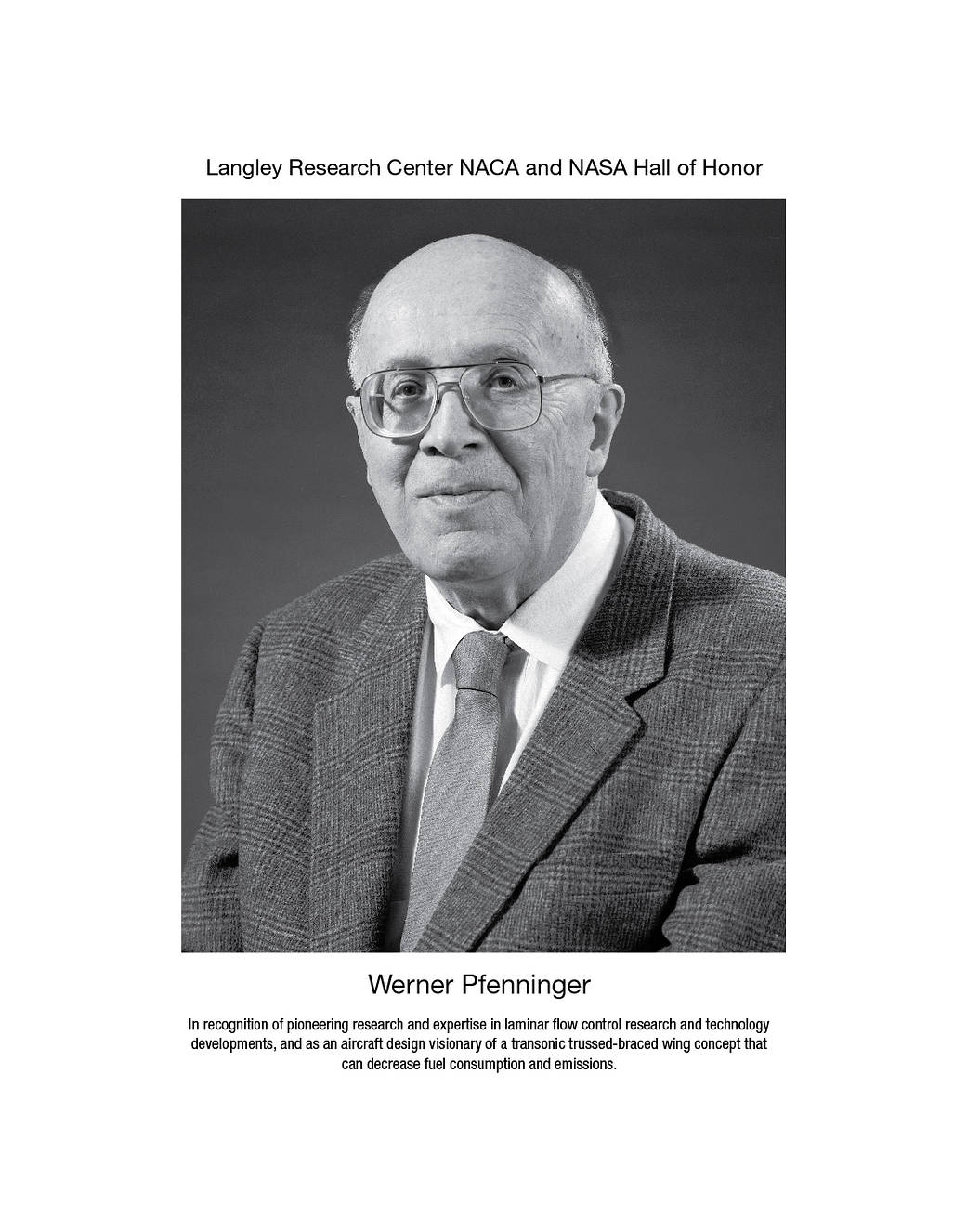Werner Pfenninger
Dr. Werner Pfenninger (1913-2003) was an early pioneer and world-renowned expert in laminar flow control research and technology developments. He was also an aircraft design visionary who introduced a transonic strut- or trussed-braced wing concept that is being developed now, almost 70 years later, as manufacturers look for ways to decrease fuel consumption and emissions.
Pfenninger was born in Hinwil, Switzerland. He came to the U.S. in 1948 after receiving his technical education and doctorate at the Swiss Federal Institute of Technology. He originally worked for aircraft manufacturers, where he began his laminar flow control (LFC) experiments. Smooth, even flow over a wing is called laminar flow and it’s what allows an airplane to fly efficiently. Airflow that separates from the wing’s surface causes turbulence, which results not only in a bumpy ride for passengers, but also increased drag that reduces efficiency and performance. Understanding and controlling these aerodynamic forces on the wing is key to increased safety, better fuel performance, and the ability to carry more weight.
Pfenninger’s experiments included the installation of carefully designed suction slots on an airplane wing that he theorized would improve laminar flow. His slotted airfoil design was tested in a NASA Langley pressure tunnel in 1951 and it achieved the highest laminar flow ever at that time. He also obtained successful results when he reactivated LFC flight research in the U.S. with the use of a glove on an F-94 aircraft. Pfenninger continued making his mark in laminar flow control research in private industry, until he came to NASA Langley in 1976 where his experiments and leadership made Langley a worldwide leader in LFC technology development.
Among his advancements were: unique supercritical shockless LFC airfoils to maintain 100 percent laminar flow in pressure tunnel tests; an experiment that successfully demonstrated that LFC and supercritical technology could be combined in a superior airfoil with 60 percent less drag; and the co-development of a low-speed natural laminar flow airfoil that was successfully tested by a small private plane manufacturer. Pfenninger also acted as a consultant of successful laminar and hybrid laminar flow flight tests at subsonic and supersonic speeds.
Pfenninger used his multidisciplinary expertise to introduce a transonic truss-braced wing concept for aircraft in 1954, a design that decades later is being tested and refined by private industry and in NASA wind tunnels. The configuration, which helps increase fuel efficiency, features long, slender wings that are supported by trusses.
Pfenninger authored or coauthored more than 200 scientific and technical papers. He was a fellow of the American Institute of Aeronautics and Astronautics and frequently sought after as a consultant by industry and universities worldwide. He retired from NASA Langley in 1994.




























